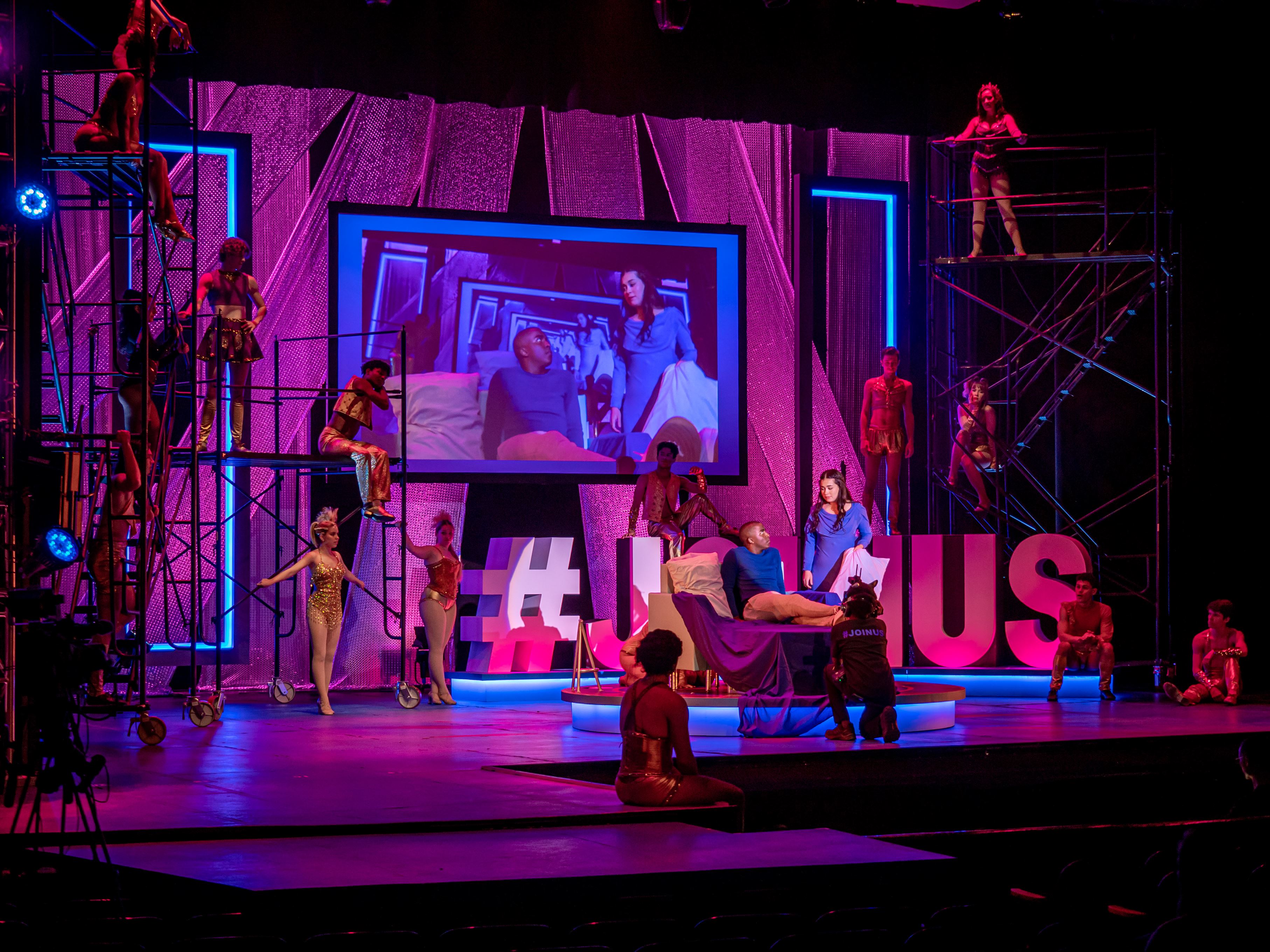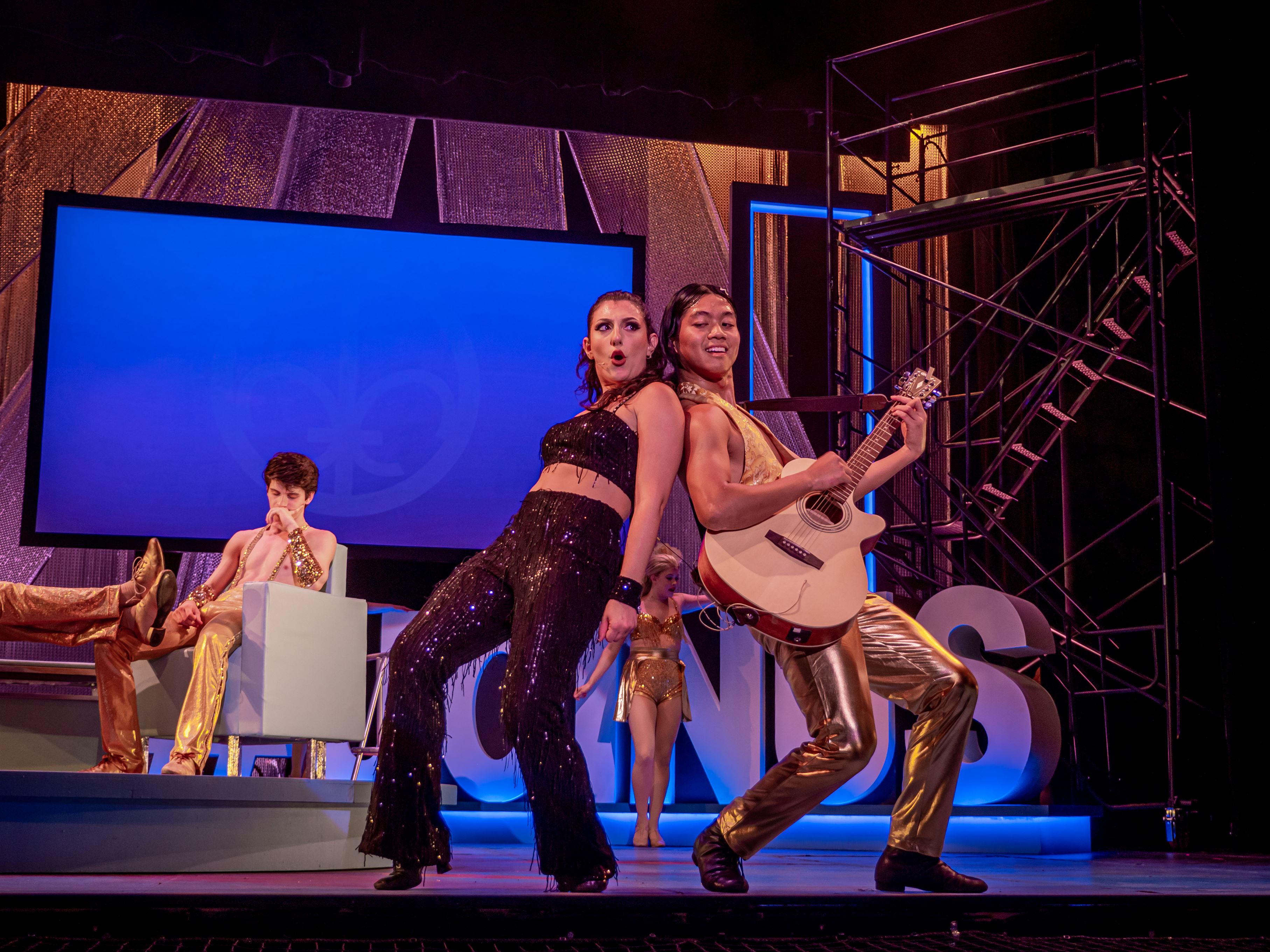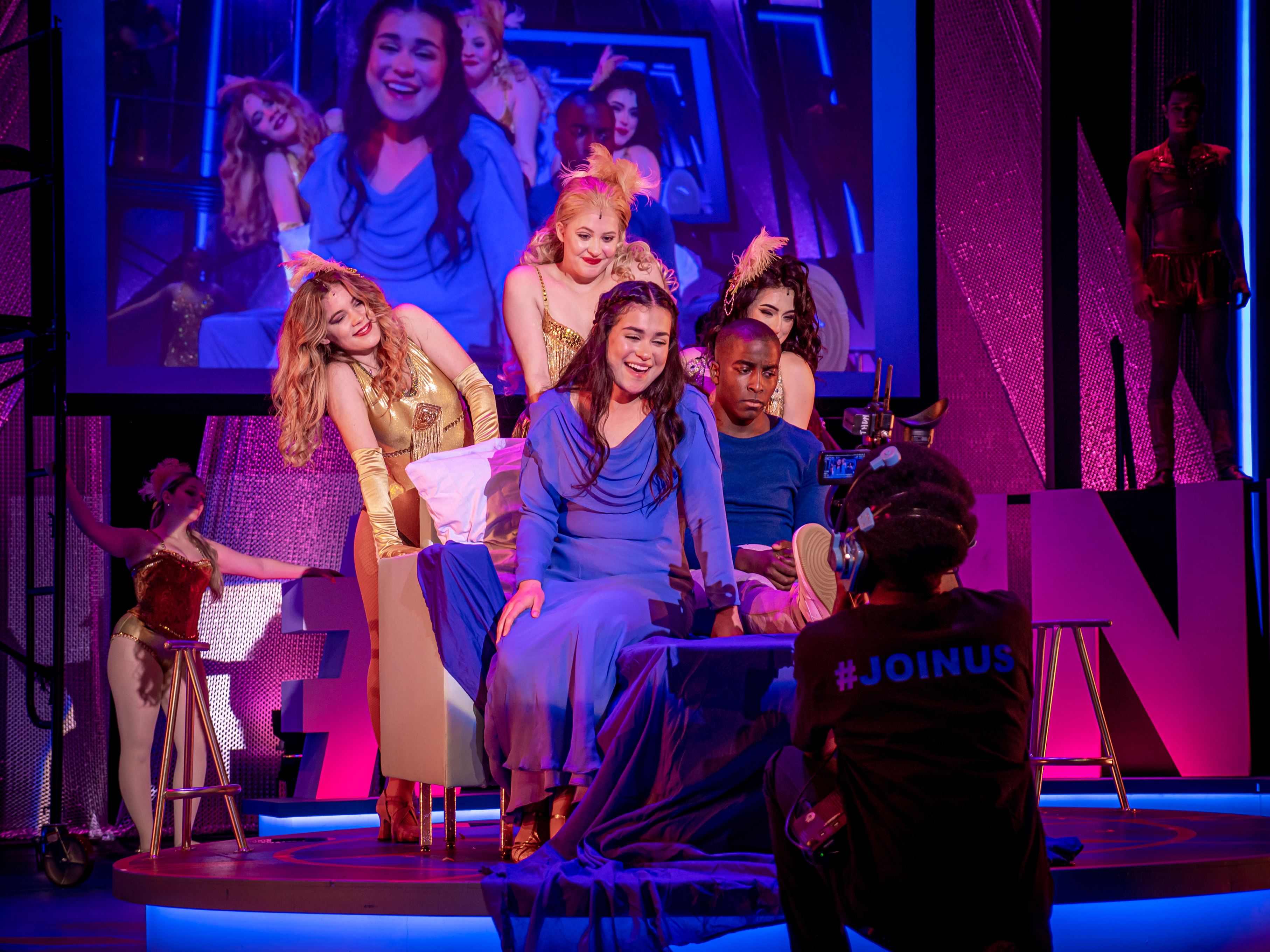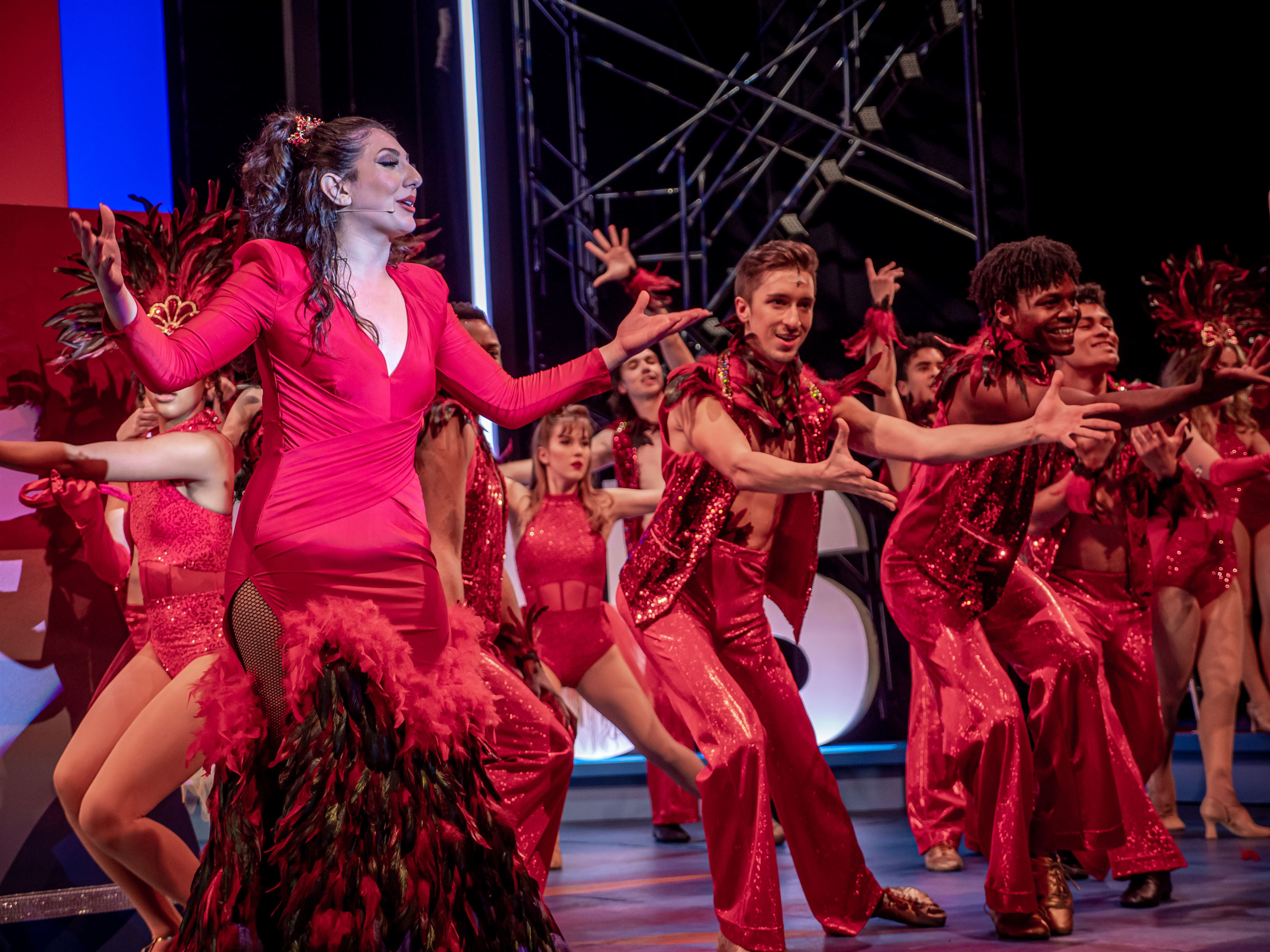“Pippin” had me on the edge of my seat from the moment I stepped into the theater until the moment I opened the doors to leave. Everything about the show was “big”; the set was beautiful, the costumes were all amazing and the overall performance shown by the actors, especially the finale, brought the extravaganza to a whole new level.
Peter Flynn, an associate professor of theatre and dance and the director, shared insight into “Pippin” and some challenges of how he wanted to tell the story.
“’Pippin is very simple with not a lot of story there,” Flynn said. “And so it really takes a specific eye as far as ‘how do we want to tell the story?’ and what’s going to make it not only clear to the audience but compelling for the audience to stay and be a part of the show. One of the challenges was to try this new concept and see how we can tread it through Stephen Schwartz and Bob Fosse’s original play.”

The performance by the actors brought "Pippin" to a whole new level.
Photo courtesy of John J. LaRosa
It was a performance within a performance. The character Pippin, played by junior musical theatre major Jonah Nash, is the son of King Charlemagne, played by senior musical theatre major David Hartway. He is always chasing this feeling he has of having the potential to be something more. Pippin’s limits are constantly being put to the test, especially when he meets Catherine, played by junior musical theatre major Julianna Braga Domiciano. But the lines blur. How much of it all is really an act?
One word to describe “Pippin” is extravagant. This is especially noticeable in their costumes. The details of the wardrobe were so beautiful, with the lights bouncing off the sequins and shiny fabric. The different costume changes that had the ensemble of Players wearing bright colors instead of regular shades of black were a really nice change.

Maggie Likcani (left) is a Leading Player and Nathan Angelo (right) is part of the Player ensemble.
Photo courtesy of John J. LaRosa
But without revealing too much, the most memorable element of the performance is that the audience is a part of the show in ways that cannot be said for other productions; this is one of the things that stuck with me even after it ended.
The decorations by the door of the auditorium were a great detail to see. They said “Join Us,” a hashtag used to emphasize how the show calls viewers to participate. Before the show started, actors walked in the aisles of the theater in character, asking if audience members wanted to be “part of the show.” For those up to the challenge, their seat number was taken and put into a hat, thus being entered into the raffle. You wouldn’t find out what it was for until the show started. When I got to my seat, the best feeling was that it felt like the production had already started before the opening number even began.
In one of the dance numbers, the audience was even encouraged to sing along to the song, making the idea of incorporating viewers into the performance even more significant.
The performance might have been confusing at some points, but every time I thought I would be left behind in the story, details would later pop up to connect me back to the show’s meaning. It was awesome to see moments where the audience is seeing the performance in front of them while also having moments they are called to be included in the show.
This participation was important to Flynn.
“One student who saw [the performance] said, ‘Boy, at the beginning of the show, all I wanted to do was join you all and by the end, all I wanted to do was go running from the theater,’” Flynn said. “In my mind, I thought, ‘Then you got the show!’ That was the intention. That made me feel good because, ultimately, the [students] are the ones telling the story.”
Another thing I absolutely loved was the camera, operated by Omar Presendieu, that zoomed into faces in the crowd and kept the audience entertained. Anyone who was on camera could see themselves on the giant screen in the center of the stage. A few people had fun with it. The same camera added an entirely new element to the show itself, really bringing it all together.

Catherine (Julianna Braga Domiciano) and Pippin (Jonah Nash) were broadcasted on the screen by the camera operator, Omar Presendieu.
Photo courtesy of John J. LaRosa
Ashley Graves, a senior theatre studies major, helped work on the show.
“As a theatre studies student, I have seen a lot of shows,” Graves said. “But ‘Pippin’ was one I was not familiar with, so it was exciting to see people I knew take on the show. Working behind the scenes, on the set and costumes, was so much fun to see [the production] come to life, and [everyone involved] truly killed it onstage. The dance numbers were so much fun, the audience interaction kept me engaged with the show, and the camera aspect of the show was so cool and something I’d never seen before. It was a great time.”
Ariana Ortiz, a junior English major, was familiar with the story but was still surprised.
“It slayed,” Ortiz said. “This production was such a fun and modern interpretation of the show, and it really embraced the idea that it’s okay, if not better, to be ordinary. Sometimes the ordinary parts of life are the parts most worth it, and I think it was represented in a really meaningful and entertaining way.”

Leading Player Maggie Likcani was part of the memorable finale of "Pippin."
Photo courtesy of John J. LaRosa
The grand finale, which implied multiple points throughout “Pippin,” was incredibly unexpected. It asked the question, “What are you left with after everything is over?” Maybe the things that we thought would make life extraordinary might just be the ordinary things. The details in everything from the costumes to the stage to the lighting, along with the performers and band giving their all, made it all come together perfectly in “Pippin.”



